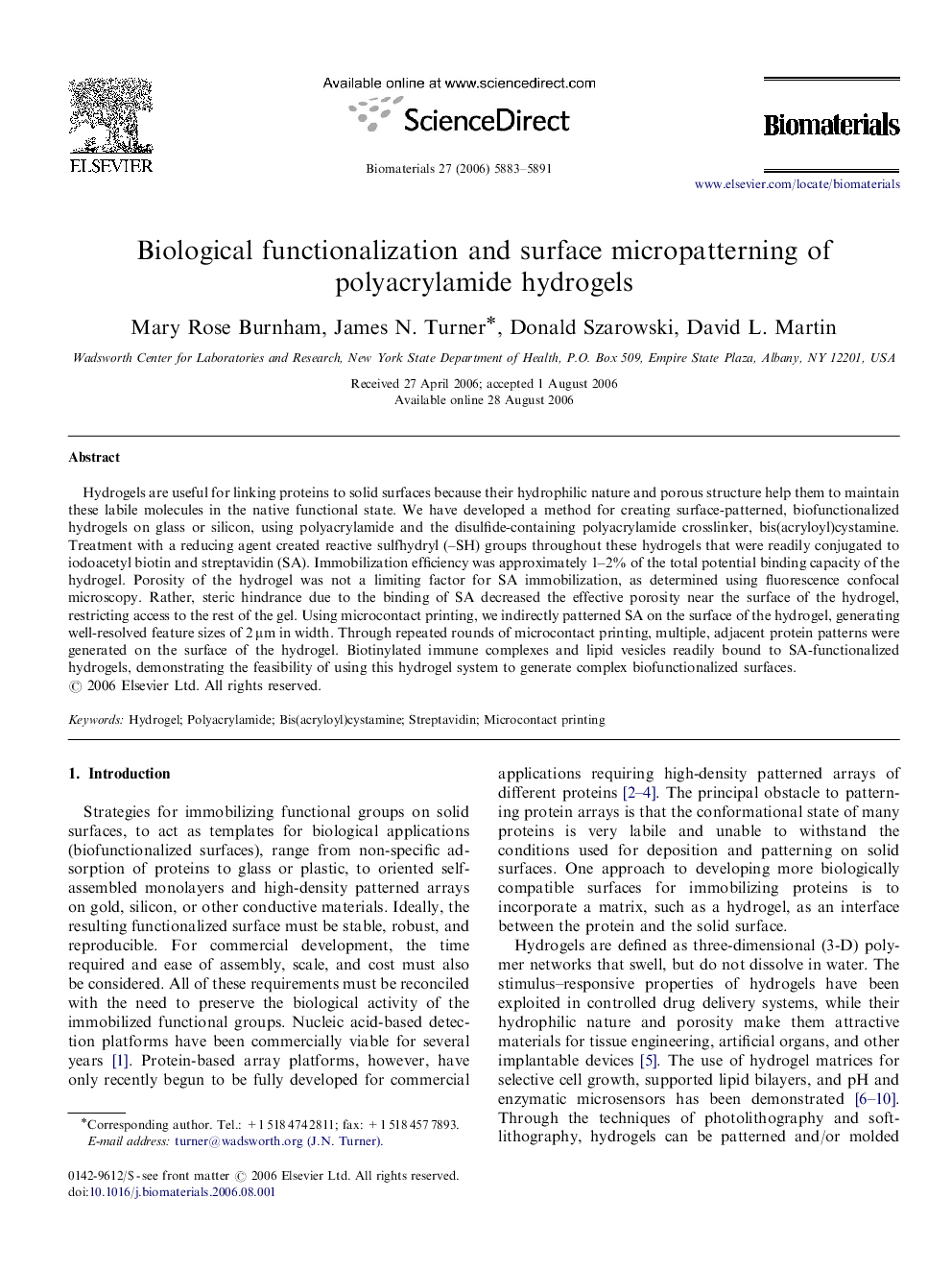| کد مقاله | کد نشریه | سال انتشار | مقاله انگلیسی | نسخه تمام متن |
|---|---|---|---|---|
| 11718 | 755 | 2006 | 9 صفحه PDF | دانلود رایگان |

Hydrogels are useful for linking proteins to solid surfaces because their hydrophilic nature and porous structure help them to maintain these labile molecules in the native functional state. We have developed a method for creating surface-patterned, biofunctionalized hydrogels on glass or silicon, using polyacrylamide and the disulfide-containing polyacrylamide crosslinker, bis(acryloyl)cystamine. Treatment with a reducing agent created reactive sulfhydryl (–SH) groups throughout these hydrogels that were readily conjugated to iodoacetyl biotin and streptavidin (SA). Immobilization efficiency was approximately 1–2% of the total potential binding capacity of the hydrogel. Porosity of the hydrogel was not a limiting factor for SA immobilization, as determined using fluorescence confocal microscopy. Rather, steric hindrance due to the binding of SA decreased the effective porosity near the surface of the hydrogel, restricting access to the rest of the gel. Using microcontact printing, we indirectly patterned SA on the surface of the hydrogel, generating well-resolved feature sizes of 2 μm in width. Through repeated rounds of microcontact printing, multiple, adjacent protein patterns were generated on the surface of the hydrogel. Biotinylated immune complexes and lipid vesicles readily bound to SA-functionalized hydrogels, demonstrating the feasibility of using this hydrogel system to generate complex biofunctionalized surfaces.
Journal: Biomaterials - Volume 27, Issue 35, December 2006, Pages 5883–5891